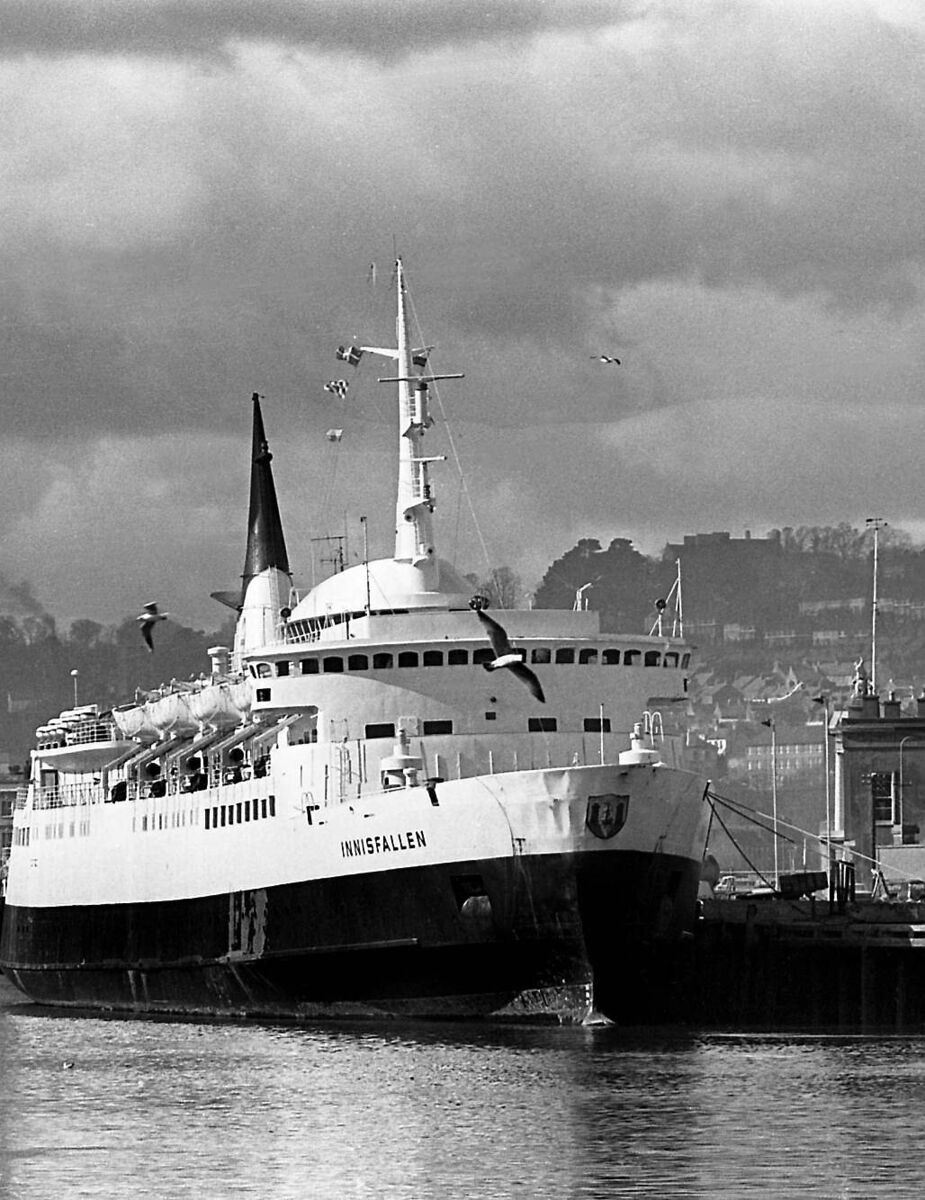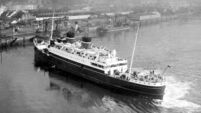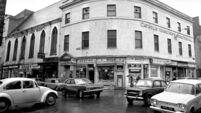Throwback Thursday: Remembering Cork’s lifeguards of the past

The Cork Royal Life Saving Society in 1960, including Phil Darcy and Brenda Murphy, recalled in today’s Throwback Thursday. Back: Bert O’Driscoll, Ed McNally, Phil Darcy, Denis McCarthy, Con O’Brien, Jim Crockett. Front: Margaret Fennessy, Brenda Murphy, Carmel Lawless, Pat Kenefick, Ivy Power
YOU remember that article on the Brown Bomber which we ran in Throwback Thursday last week?
Well, Pat and Drew O’Brien, sons of that renowned swimmer, life-saver, and diver, were quick to respond and thank us for highlighting their dad’s career.
“It really told a lovely story as well, as the provenance of the swimming environs in Cork down through the years,” they said. “And it has had fantastic resonance among our family and friends.”
Well, we were delighted to get such a story on a great Cork figure, and wonder how many more untold legends are out there.
Do you feel that your own parents’ tales deserve to be told, their lives highlighted - the achievements they made, whether keeping the family clothed and fed or breaking new ground and reaching new horizons?
If you have ever wished that more people knew about how great your mum and dad were, then now is your chance - tell us about it! Email jokerrigan1@gmail.com and let us know.
Reader Noel Johnston enjoyed that piece on the Lee Baths too, and wrote to tell us so.
“Hi Jo, once again great memories. My mum used to take me to the outdoor baths very often in the late ’40s. In due course I graduated from the babies’ side to the far side, hanging on to the side for dear life all the way! I learned to swim, but never very well.
“It nearly came to an end there too near the side when some langer dived on top of me. Down I went, but a very attentive lifeguard (name unknown) dived in and hauled me out, plonking me spluttering and gasping on the ground.

“Everyone continued as normal, as they did back then. No big deal, perhaps, but I always have great time for lifeguards, and indeed the RNLI.
Noel adds: “Incidentally, Robin Power was a lifeguard some years later in the days of the great swimmers - Phil Darcy. Brenda Murphy and somebody Cantillon, whose first name I forget.
And I too have happy memories of the Lee outside, at Hell Hole by the Angler’s Rest, and of course the Eglinton Street Indoor Baths.
Yes, Phil Darcy was a legend in swimming circles in the early 1960s, the dominant force in freestyle and butterfly, and was a credit to her club, Sunday’s Well, which had been founded as far back as 1924 - making it 100 years old this year.
Other top swimmers of this period included Ger Kenefick, and those keen Christians boys, Paul and Andreas Whelton. Tom Cross was a coach here in the early 1970s, while both his sisters, Jane and Dorothy, also distinguished themselves.
Didn’t Jane (now Jolly) swim the Hellespont in more recent years? Or have I got the wrong stretch of water, Jane?
Dorothy, of course, is better known now as a distinguished artist, working with media as widely differing as sculpture, photography, video and installation.
******

Now - remember that discussion which took place over several weeks about the exact location of a Vietnam protest by UCC students back in 1967? The original photo was so cropped the place couldn’t be identified, but once it was reprinted in full, it became clear that the picture was taken at Gaol Cross.
Catherine Lee wrote in about this, and included a wonderful family story with it.
“You were enquiring where the photo was taken of UCC students in the anti-Vietnam protest. It was at Gaol Cross - you can see the old Gaol in the distance. I remember a grocery shop being at the corner for many years.
“I distinctly remember my mother buying a bottle of Lucozade there, with the orange cellophane wrapping, in the late ’70s. The shop’s address is Homeville Place, 16 Western Road, Cork, T12 Y2NF.
It is now Noodlee, an Asian dine-in/takeaway, but a good few years ago, maybe around 1989, it was a fast food place which had an inside dining area, and was called Get Stuffed.
Catherine adds: “A famous family story regarding my grand uncle, Donnacha Ó Murchú (former vice principal of the North Monastery) is as follows:
“Criostóir de Baróid, otherwise known as Christy Barrett, who was the helper and friend of the late General Tom Barry, and later, on the death of Barry, became helper and friend of my grand uncle, went out for a few hours. When he returned, my grand uncle asked Christy where he had been. Christy’s reply was ‘Get Stuffed’. My grand uncle was both horrified and cross that Christy was rude to him and would not tell him where he had been!”
That’s delightful, Catherine. It’s great when readers share personal family stories and jokes like this. It makes us all one big family really, doesn’t it? Most of us have similar memories of confusions and mistakes that turned over time into legends. Let’s hear more of them!
******

Now, the Innisfallen never fails to arouse many happy memories, especially so from reader Frank Roche, who decided to do a bit of digging into its history for himself and generously shared the results with us:
“A while back you mentioned a previous Innisfallen. I wondered if there might be a photo of it, but when I searched, it appeared that there was no Innisfallen serving Cork between 1939 and 1948, so I trawled a bit more and made a list of the Cork Innisfallens.
“The below is just a browsing collection of information from a variety of online sources - it’s not rigorously cross-checked - so while reading, be mindful of the caveat, ‘The trouble with the internet is you can’t be certain that everything you read is accurate’.”
#1. Innisfallen 1896-1918
Innisfallen (1) was built at Newcastle-on-Tyne in 1896 and was chiefly intended for the Cork-Milford service (the terminus became Fishguard when the Goodwick berth opened in 1906). Innisfallen (1) was torpedoed on May 23, 1918, near the Kish Lightship on its way from Liverpool to Cork - 10 died.
The City of Cork Steam Packet Company lost six ships during World War I - Bandon, Ardmore, Lismore, Kenmare, Inniscarra and finally the 1896 Innisfallen. The losses led to the company being taken over by the Liverpool-based Coast Lines group in 1918.
SS Magic, launched in Belfast in 1893, was renamed SS Classic in 1919 and this was its name when it carried Michael Collins’ body from Cork to Dublin in 1922. SS Classic was used on the Cork-Fishguard and the Cork-Liverpool routes. It was again renamed in 1925: as SS Killarney it operated out of Cork until replaced by the 1930 Innisfallen.
#2. Innisfallen 1930-1939 (Cork-Fishguard)
Innisfallen (2) was built in Belfast for the City of Cork Steam Packet Co. in 1930 and went into service on the Cork-Fishguard route - it also offered excursions and short cruises.
A reorganisation of the Coast Lines group set up a new company in 1936 called the ‘British and Irish Steam Packet Co. (1936)’. The former City of Cork Steam Packet was renamed as the ‘City of Cork Steam Packet Co. (1936), Ltd.’
The Mon/Wed/Fri Innisfallen sailings from Cork to Fishguard continued for a few years, but shortly after the outbreak of war in September, 1939, Cork-Fishguard passenger sailings were cancelled, though cargo and livestock transport continued.
The Innisfallen, which was better suited to the passenger trade, was transferred to the Dublin-Liverpool route. Innisfallen struck a mine and sank while leaving the mouth of the Mersey on December 21, 1940 - all 157 passengers were saved but four crew died with three more wounded.
Earlier that same month, on the 11th , the SS Ardmore left Cork for Fishguard with a cargo of cattle and pigs: she disappeared without trace at first, but over the following weeks, wreckage and a few bodies were found. All 20 crew and the five cattlemen on board died.
It wasn’t until 1998 that her wreckage was found and identified a short distance south of the Saltee Islands: the damage confirmed that she also had struck a mine. The tragedy is commemorated on a plaque at Penrose Quay.
Frank adds: “I didn’t examine what other ships were used on the Cork-Fishguard service between the loss of the Ardmore in 1940 and the arrival of the 1948 Innisfallen, but the SS Kenmare was used for at least some of those years. I saw a mention of it operating the cargo/livestock service in 1943; it also appears that it was the Kenmare that resumed the passenger service after the war.”
#3. Innisfallen 1948-1968 (Cork-Fishguard)
Innisfallen (3) was built in Dumbarton for the British & Irish Steam Packet Co. and began service in 1948; the advertising slogan ‘Travel the Innisfallen Way’ was brought back into use.
Innisfallen 1948, which sailed from Cork to Fishguard three times a week until 1968, is the ‘real Innisfallen’ for many older Cork people.
“When first put into service, she had a dark green hull, cream superstructure with a green, white and black funnel.
“In 1953, Coast Lines transferred the ship back to the City of Cork Steam Packet Co., and she was repainted with a black hull, white superstructure and a white funnel with a black top. In 1967, the Irish Government bought B+I Lines from the Coast Lines group.
#4. Innisfallen 1969-1979 (Cork-Swansea), car ferry
Innisfallen (4), the first car-ferry, operated from Cork-Swansea from 1969-1979 before being switched to the Dublin-Liverpool route.
#5. Innisfallen (née Leinster) 1980-1983 (Cork-Pembroke), car-ferry
The former Leinster was renamed Innisfallen in 1980 and sailed on the Tivoli-Pembroke Dock route until 1983, when all services ex-Cork were discontinued.
Frank, thank you. What a great history of a legendary service, used by so many of our forefathers and indeed ourselves.
But aren’t the last words of your excellent piece truly saddening? “…when all services ex-Cork were discontinued.”
Oh, bring back the Innisfallen! Bring it back!
******
That wonderful maintainer of the skill of handwritten letters in this age of texting and email, Rose in Ballyvolane, has posted us another missive, this time with regard to Pat Kelly’s memories of living in Collins Barracks as a child.
“I was reading with interest about Pat Kelly and his family. He said he lived in No.4 house in No.4 Block. That’s amazing as I lived in No.2 house, No.2 Block (that would be in front of 4 Block) in the 1950s, until 1963, when we moved to a bigger house out behind the barracks, still army, till my dad sadly died in 1968.
However, I don’t remember Pat Kelly. There were two families called Kelly when I was there, but most of them had girls more than boys.
“I also went to St Patrick’s school by St Luke’s until I went to North Pres. I would love to know when Pat lived there, as we all knew each other growing up in the barracks, but I can’t remember them. They can’t have been there very long, perhaps?”
Rose adds: “Keep up the good work. Loving all the memories, and especially anything to do with Collins Barracks and that area.”
Now here is a message especially and only for you, Rose. You can write to me direct at Castleview, Macroom, so that your letter doesn’t have to go through the system at the office in Blackpool. Take a note of that address right now!
And Pat Kelly, can you put Rose out of her misery and sort this Mystery Of The Children of Collins Barracks? Neither of you is very likely to have mistaken where you lived, as our childhood days are engraved on our memories as long as we exist. Can’t you - all of you reading this - recall every single crack in the paving stones and every step in the street where you were born and raised? Of course you do.
Send us your memories. Email jokerrigan1@gmail.com. Or leave a comment on our Facebook page: https://www.facebook.com/echolivecork.







